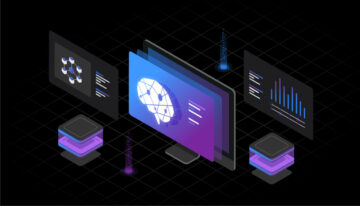
How organizations approach IT operations is evolving due to the increasing adoption of cloud technologies. See why ITOps is important and how it compares to AIOps, DevOps, and DevSecOps.
As more organizations adopt cloud-native technologies, traditional approaches to IT operations have been evolving.
Complex cloud computing environments are increasingly replacing traditional data centers. In fact, Gartner estimates that 80% of enterprises will shut down their on-premises data centers by 2025. This transition to public, private, and hybrid cloud is driving organizations to automate and virtualize IT operations to lower costs and optimize cloud processes and systems.
So, what is ITOps? We’ll discuss how the responsibilities of ITOps teams changed with the rise of cloud technologies and agile development methodologies. And, most importantly, we’ll cover the capabilities teams need for ITOps success in modern enterprise IT environments.
What is ITOps?
ITOps is an IT discipline involving actions and decisions made by the operations team responsible for an organization’s IT infrastructure. ITOps refers to the process of acquiring, designing, deploying, configuring, and maintaining equipment and services that support an organization’s desired business outcomes. Besides the traditional system hardware, storage, routers, and software, ITOps also includes virtual components of the network and cloud infrastructure. The primary goal of ITOps is to provide a high-performing, consistent IT environment.
The roles and responsibilities of ITOps team members include the following:
- A system administrator configures servers, installs applications, monitors the health of the system, and fixes and upgrades hardware.
- A network administrator sets up a network, manages virtual private networks (VPNs), creates and authorizes user profiles, allows secure access, and identifies and solves network issues.
- Computer operations manages the physical location of the servers — cooling, electricity, and backups — and monitors and responds to alerts.
- The IT help desk creates a ticketing system and resolves service request issues.
- Cloud operations governs cloud computing platforms and their services, applications, and data to implement automation to sustain zero downtime.
Why is IT operations important?
The importance of ITOps cannot be overstated, especially as organizations adopt more cloud-native technologies. Although modern cloud systems simplify tasks, such as deploying apps and provisioning new hardware and servers, hybrid cloud and multicloud environments are often complex. The challenges ITOps teams face in maintaining operational stability in these environments continuously evolve as an organization grows and introduces new business initiatives.
If IT operational processes are weak or do not meet industry standards, the quality of business services IT supports will be subpar and negatively affect customer experience.
How does ITOps create business value?
ITOps help an organization achieve its goals, improve product delivery, ensure reliability and uptime, and plan for future growth. Organizations measure these factors in general terms by assessing the usability, functionality, reliability, and performance of products and services. ITOps teams use more technical IT incident metrics, such as mean time to repair, mean time to acknowledge, mean time between failures, mean time to detect, and mean time to failure, to ensure long-term network stability.
In general, you can measure the business value of ITOps by evaluating the following:
- Usability. Digital experience monitoring (DEM) of an application’s success rate, error rate, and the time it takes to complete a task measures the overall quality of a customer’s experience.
- Functionality. This refers to whether the service functions as intended.
- Reliability. This is the number of failures that affect users’ ability to use an application by the total time in service.
- Performance. This includes response time, accuracy, speed, throughput, uptime, CPU utilization, and latency.
What does IT operations do?
ITOps teams are responsible for establishing, maintaining, and growing a reliable, high-performing, and secure IT infrastructure. They set up private, public, or hybrid cloud infrastructure. Additionally, they manage applications and services deployed on the network and provide secure access to authorized users. These teams also perform routine daily tasks, negotiate IT vendor contracts, and oversee IT upgrades.
ITOps is also responsible for configuring, maintaining, and managing servers to provide consistent, high-availability network performance and overall security, including a disaster readiness plan. To ensure resilience, ITOps teams simulate disasters and implement strategies to mitigate downtime and reduce financial loss. If malware, data corruption, or another security breach occurs, ITOps teams work with security teams to identify, isolate, and remediate affected systems to minimize damage and data loss.
ITOps vs. DevOps and DevSecOps
IT Operations is responsible for all an organization’s IT operations, including the end users’ IT needs, while DevOps is focused on agile continuous integration and delivery (CI/CD) practices and improving workflows. DevOps works in conjunction with IT. But it does not have the same broad visibility of the enterprise tech stack as ITOps.
Organizations are also increasingly integrating application security into their DevOps teams and processes — also known as DevSecOps. Adding application security to development and operations workflows increases efficiency. It also makes applications more secure during development and in runtime and promotes greater security awareness through the CI/CD pipeline.
CloudOps teams are one step further in the digital supply chain. As workloads shift to public, private, and hybrid cloud environments, CloudOps teams help IT and DevOps manage increasing complexity by defining and managing best practices for cloud-based operations.
ITOps vs. AIOps
AIOps (artificial intelligence for IT operations) combines big data, AI algorithms, and machine learning for actionable, real-time insights that help ITOps continuously improve operations.
The three core components of an AIOps solution are the following:
1. Data. Collect raw data in virtual and nonvirtual environments from multiple feeds, normalize and structure the data, and aggregate it for alerts.
2. Analytics. Apply AI and machine learning to identify normal behavioral patterns and topology of the data, correlate relationships, and detect anomalies for precise, actionable, real-time insights.
3. Automation. Continuously gather high-fidelity data in context without manual configuration or scripting.
ITOps relies on manual correlations and dashboards for analysis. AIOps, on the other hand, uses AI and machine learning for automatic analysis and insights. AIOps also provides contextual understanding of anomalies and event correlation in relation to the IT infrastructure, systems, applications, or service independent of cloud deployment that is used to predict and prevent future problems.
How to modernize ITOps with AIOps
Today’s complex, distributed multicloud environments with cloud-native technologies require an AI-powered platform-based approach to ITOps with automation that spans public, private, and hybrid cloud ecosystems.
The Dynatrace AIOps platform approach integrates data from disparate monitoring point solutions and uses deterministic AI to fully map the topology of complex, distributed architectures for real-time, actionable insights. The Dynatrace AI engine, Davis, provides precise answers with automatic root-cause analysis to help DevOps and ITOps continuously improve workflows.


